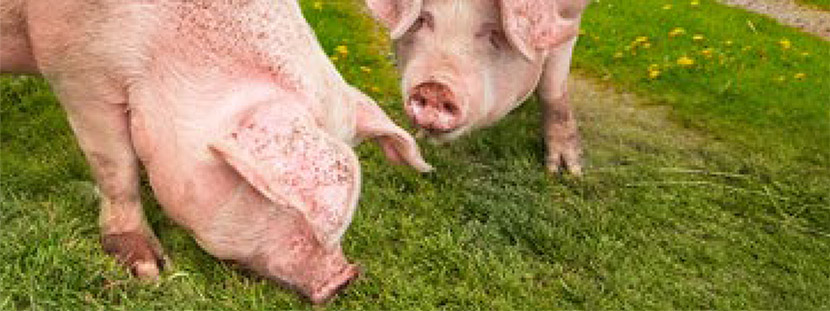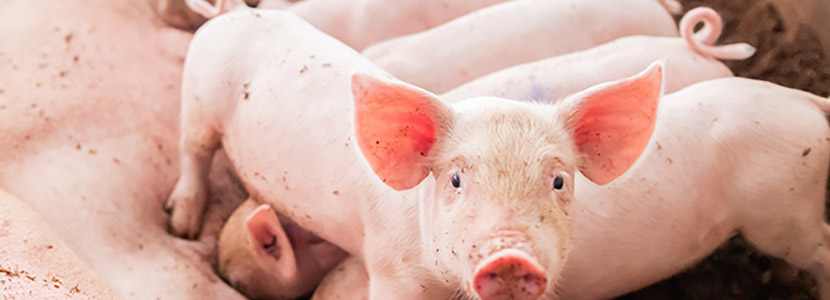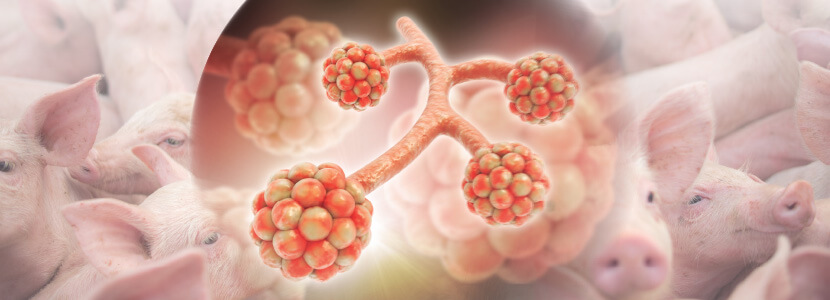What they discovered was a new type of flu that was a mixture of our H1N1 human flu and an avian flu.
Researchers have found a new strain of influenza virus with “pandemic potential” in China. It is a virus that can spread from pigs to humans, and has made a number of alarming headlines. The fact that the virus has been detected so early is excellent news, as activating the alert situation quickly allows virologists to […]

Researchers have found a new strain of influenza virus with “pandemic potential” in China. It is a virus that can spread from pigs to humans, and has made a number of alarming headlines.
The fact that the virus has been detected so early is excellent news, as activating the alert situation quickly allows virologists to take action and develop new tests specifically for this particular flu virus.
But it is important to understand that so far there is no evidence that this virus can be transmitted from human to human, and although antibody tests have shown that some Chinese pig workers have indeed had it in the past, there is no evidence at present that this virus is particularly deadly either.
What is known so far
China has a fantastic flu surveillance system in place in all its provinces. They track the occurrence of influenza outbreaks originating from birds, humans or pigs.
And they do so because, as the scientists say in the article, “systematic surveillance of influenza viruses in pigs is key to both early warning and preparedness for a potential pandemic”.
Between 2011 and 2018, in their surveillance of influenza viruses from pigs, the researchers found what they called “a recently emerged genotype 4 (G4) that has been reclassified as an H1N1 virus, similar to those from Eurasian birds (EB)”.
In that paper, they called the G4 EA H1N1 virus, and they argued that it had been spreading very slowly since 2013, becoming the key component of the H1N1 swine-origin virus that was detected in China in 2018.
What they discovered was a new type of flu that was a mixture of our H1N1 human flu and an avian flu.
What is interesting is that the antibody tests showed that the workers on the pig farms in the affected areas were infected.
Among the workers tested, about 10% (35 people out of 338) showed signs of having contracted the new G4 EA H1N1 virus in the past and people aged 18-35 seemed more likely to have had it.
Most notably, however, a small percentage of the total blood samples collected also tested positive for antibodies; these samples came from people who had little contact with the pigs in the first place, i.e. these people had also had the virus in the past.
It is very relevant that so far researchers have not found evidence that human-to-human transmission of the virus is possible.
Infectious efficiency and aerosol transmission in ferrets” has been discovered, meaning that there is evidence that the new virus can be spread through airborne droplets from ferret to ferret (these are animals that are often used as surrogates for humans in studies of influenza viruses).
Ferrets infected with the G4 virus became ill, lost weight and suffered lung damage, as did other ferrets infected with a seasonal strain of the human-origin H1N1 flu virus.
It was also found that the virus can infect cells in the human respiratory tract, and most people still do not have antibodies to G4 viruses, meaning that most human immune systems lack the tools to fight off illness if faced with such a virus.
In summary: This virus has been circulating for years, is known to jump from pigs to humans, and meets all the requirements to become one of those infectious diseases that researchers call PPP (potentially pandemic pathogen).
If a human is infected, how serious is it?
We don’t have a lot of data to work with yet, but it’s likely that people who have had these infections in the past won’t even remember that they had them.
New articles on the subject do not offer much detail, but none of the people from whom the samples came died from this virus.
There are no indications that this new virus has had a great impact or spread in the regions of China where it has been detected, as this country has excellent virus surveillance systems and at this time there is no reason to be afraid.
The World Health Organization has stated that it is following events very closely, and that this “highlights the fact that one cannot let down one’s guard against the flu.
What’s going to happen now?
People working in the field (infectious disease research) are alert, but not alarmed. New flu strains emerge from time to time and you need to be prepared to respond to them, you need to pay close attention to any possible signs of human-to-human transmission.
As far as is known, the specific tests used for human influenza will not be able to identify this new G4 EA H1N1 virus, so new tests should be developed and ready soon. However, standard screening tests for influenza A should work.
In other words, you can tell if someone has so-called “influenza A” (a type of flu virus that is normally detected in seasonal flu). But this is a very general term that covers many types of flu strains.
There is no specific test yet for this particular strain discovered in China, but one can develop quickly.
It is key to be prepared in the laboratory for unusual outbreaks of flu. This preparedness underlines the importance of pandemic planning, current virus surveillance systems and the implementation of comprehensive health policies.
And, as with all influenza, the best defenses are careful hand washing and maintaining social distance in case others, or the same person, have even the slightest symptom.
Author: Ian M. Mackay, Adjunct Assistant Professor, The University of Queensland
If you want to learn more about the subject, you can consult the following:
This article is republished from The Conversation under a Creative Commons license. Read the original article.
Prevalent Eurasian avian-like H1N1 swine influenza virus with 2009 pandemic viral genes facilitating human infection.
Subscribe now to the technical pig magazine
AUTHORS

Bifet Gracia Farm & Nedap – Automated feeding in swine nurseries

The importance of Water on pig farms
Fernando Laguna Arán
Microbiota & Intestinal Barrier Integrity – Keys to Piglet Health
Alberto Morillo Alujas
Impact of Reducing Antibiotic use, the Dutch experience
Ron Bergevoet
The keys to successful Lactation in hyperprolific sows
Mercedes Sebastián Lafuente
Addressing the challenge of Management in Transition
Víctor Fernández Segundo
Dealing with the rise of Swine Dysentery
Roberto M. C. Guedes
Actinobacillus pleuropneumoniae – What are we dealing with?
Marcelo Gottschalk
The new era of Animal Welfare in Pig Production – Are we ready?
Antonio Velarde
Gut health in piglets – What can we do to measure and improve it?
Alberto Morillo Alujas
Interview with Cristina Massot – Animal Health in Europe after April 2021
Cristina Massot
Differential diagnosis of respiratory processes in pigs
Desirée Martín Jurado Gema Chacón Pérez